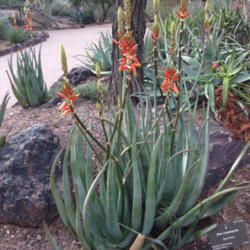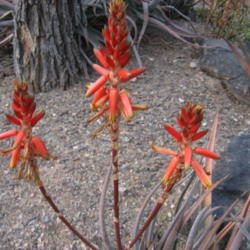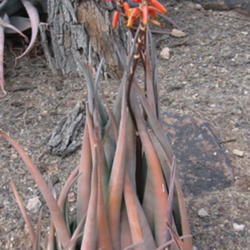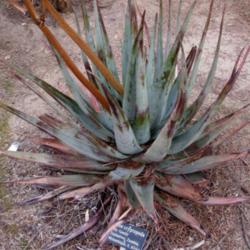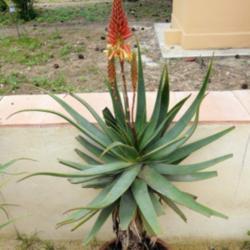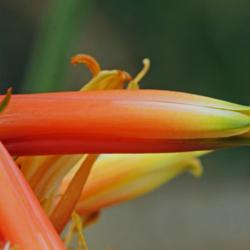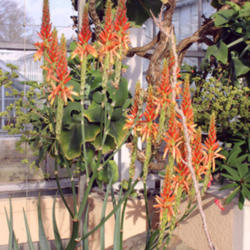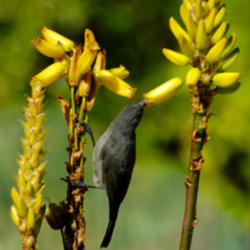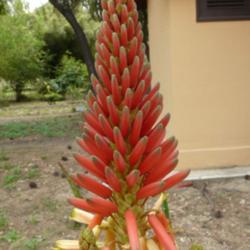General Plant Information (Edit)
| Plant Habit: |
Cactus/Succulent
|
| Life cycle: |
Perennial
|
| Sun Requirements: |
Full Sun
|
| Leaves: |
Evergreen
|
| Fruit: |
Dehiscent
|
| Flowers: |
Showy
|
| Flower Color: |
Red
Yellow
Bi-Color: Red opening to yellow
|
| Bloom Size: |
1"-2"
|
| Flower Time: |
Winter
|
| Suitable Locations: |
Xeriscapic
|
| Uses: |
Provides winter interest
Will Naturalize
|
| Wildlife Attractant: |
Hummingbirds
|
| Propagation: Seeds: |
Can handle transplanting
Other info: Sow seeds in sandy soil. Seeds germinate in a few weeks at temperatures between 68 and 75 degrees F. Seedlings need moist but well-drained soil.
|
| Propagation: Other methods: |
Cuttings: Stem
Offsets
Other: Stems cut below a node root easily. Cut a stem that has gotten leggy, let it dry out for at least a few hours to form a seal on the cut surface. Place the cutting in rooting medium kept moist, but not wet, until roots form.
|
| Pollinators: |
Birds
|
| Containers: |
Suitable in 3 gallon or larger
Needs excellent drainage in pots
|
| Miscellaneous: |
Tolerates poor soil
With thorns/spines/prickles/teeth
|
- Doctor Kirk's Aloe
- Chikowa
- Chinyangami
- Gave Wamtchanga
- Lai
- Aloe
Posted by
Baja_Costero (Baja California - Zone 11b) on Feb 6, 2020 8:57 PM concerning plant:
Stemless, solitary aloe with gray-green to purplish brown leaves and bicolored (reddish orange opening to yellow) flowers. Leaves are erect to incurved (especially with stress, correlating with a brown color). Inflorescences may have 1-4 branches and racemes are cylindrical-acuminate, with long triangular bracts. Sometimes flowers may be red when they open, sometimes buds and flowers may be yellow. This species is found in South Africa, Mozambique, Zambia, Malawi, and perhaps Tanzania. It is named for the "hidden foot", namely the pedicels somewhat masked by large bracts.
This species may be confused with the South African A. pienaarii and has at times included the South African A. wickensii; both are found in more southerly locations. It may differ from these plants in being smaller, with less highly branched inflorescences and less densely flowered racemes, with smaller bracts. A. wickensii has bicolored flowers (red opening to yellow) whereas A. cryptopoda is somewhat variable and may also have all-yellow or all-red flowers.
« Add a new plant to the database
» Search the Aloes Database: by characteristics or by cultivar name
« See the general plant entry for Aloes (Aloe)
« The Aloes Database Front Page
« The Plants Database Front Page
